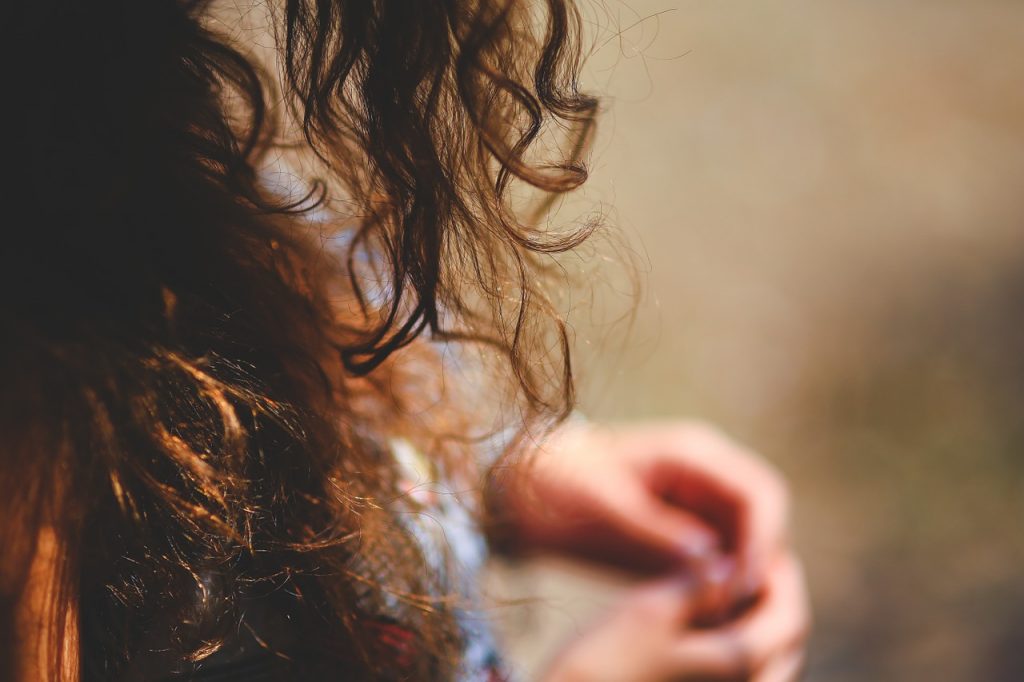Head lice in any hair type is a pain, but this can be an even bigger pain if it is in either curly or thick hair. It means that nit-combing becomes a harder and sometimes a more complicated task. There are however ways around that which can help you be more efficient and effective at clearing it. In this post we reveal the best head lice treatment for long, thick hair.
Can curly hair get head lice?
Firstly, it is important to understand that all types of hair can get head lice and no hair type is immune to them.
In fact, curly hair is often more vulnerable to catching them because it has more volume than straight or thin hair. Head lice transfer from one person to another through head to head or hair to hair contact.
Thick hair is the same – when hair comes into contact with others hair, then that is when head lice can crawl across and enter the other persons hair.

More difficult to get rid of head lice
Head lice are extremely agile and fast. They can crawl 23 cm in one minute and have 6 serious claws on the end of each leg. They grip the hair shaft with their clawed legs and run up the hair shaft to the safety of the scalp.
The problem with both curly and thick hair is in how you get the head lice and their eggs, the nits out of it. Curly hair can be difficult to nit comb. The sheer volume of thick hair can make nit combing an even longer and more intense task.
Because it is more challenging to work with infestations on both curly and thick hair, they can become very heavy quite quickly. It is therefore important to know how to treat nits in both curly and thick hair. The best head lice treatment for long, curly hair is often lots of patience!
How do you get rid of nits in curly hair?
To treat nits and head lice in curly hair here is some professional advice from The Hairforce for parents everywhere:
- Divide the hair into sections and ponytail each of them to control the task
- Because curly hair is more challenging to nit comb, create 10 to 12 sections across the head. That is 5 or 6 sections each side of a middle parting
- If the hair is difficult to detangle, don’t waste your time doing that before you divide it into the sections. Create the sections as best you can and ponytail each of them. Then, detangle one by one as you work through them
- Nit combing is best achieved by using a good quality long-toothed metal nit comb
- Take the first section and spray on some detangler or clear conditioner and then detangle. Once detangled nit-comb it thoroughly. Clean the comb with white toilet paper or tissue as you go so you can inspect anything you extract and then bin it
- Look at the toilet paper to see if there are any brown or black specks. If they are tear-dropped shaped then they are nits (the eggs), if you find head lice, they have 6 legs and can be tiny. They can be pale if they are young or as they grow older, they are dark from old oxidised blood
- When you finish a section, re-bunch and move on to the next, spraying it with a detangler or conditioner. Then nit comb. Continue to do this one by one until you have checked or combed out every section thoroughly
- Head lice are movement sensitive, so as soon as you touch the hair, they are running away from you. Dividing the hair into sections helps contain and control that movement
- Timing is everything with clearing head lice. If you don’t respect that you will fail to clear it quickly and efficiently. The eggs take 7 to 11 days to hatch and the lice take 9 to 12 days to mature into adults. When you find them your combing cycle should be as follows: day 1, 2, 6, 9 and 12.
What is the best head lice treatment for long, thick hair?
All the professional advice given for clearing or checking curly hair applies to thick hair. You need to create many more sections to be able to cope with the thickness of the hair, otherwise getting a nit comb through it all will prove a cumbersome task, which means you risk missing both head lice and nits in the extraction process.

It is particularly important to note that you shouldn’t rely on the head lice products for thick hair. These products have not only been proven to have very low rates of effectiveness but with thick hair, you will require two or even three bottles at a time to ensure you cover the hair – so can work out to be an expensive combing aid.
When the lice treatments do work, they may kill the head lice – they will not affect the eggs, and it is the eggs that often defeat parents. If you do not comb out the eggs (the nits) then they will hatch, grow up, breed, lay eggs and off you go again.
With thick hair, the eggs can really defeat you because there is so much hair to forensically work through. If you use the dividing into many sections approach and nit comb section by section you won’t miss all the eggs and lice, making this method the best head lice treatment for long, thick hair. If you are after the best head lice treatment for long, thick hair, it is best to go to a professional. They can guarantee a complete clear.
How to protect curly or thick hair from head lice
However beautiful your hair is with cascading curls and lustrous thick locks, the best way to protect both hair types are to wear the hair back in a plait, braid or bun, keeping it away from touching others.
As a parent if you have curly or thick hair, tie it back before you check your child’s hair for head lice. This will protect it from any head lice getting into it as you work. Also, if you suspect your child might have head lice then keep it tied back until you have properly checked. If you subsequently find them then keep your hair back until you have totally cleared the infestation. This also means that your child or children shouldn’t get into your bed until they are cleared.
Use the clearing techniques described – dividing the hair, applying conditioner to control the curls and creating more sections with thick hair or complicated curls. Then work to tame the curls section by section just before you nit comb. The whole task will be broken down into manageable parts and save a lot of time.
Check your child or children regularly. If you do find any nits or head lice, you get to deal with it whilst it is at a low level, which is so much easier.
If you are unsure whether you or your child has head lice, want a professional check, or need it all cleared out because the curly or thick hair is too much to handle, then do contact us. Our network of nit and head lice removal clinics can sort it for you in 2 appointments, 7 days apart.